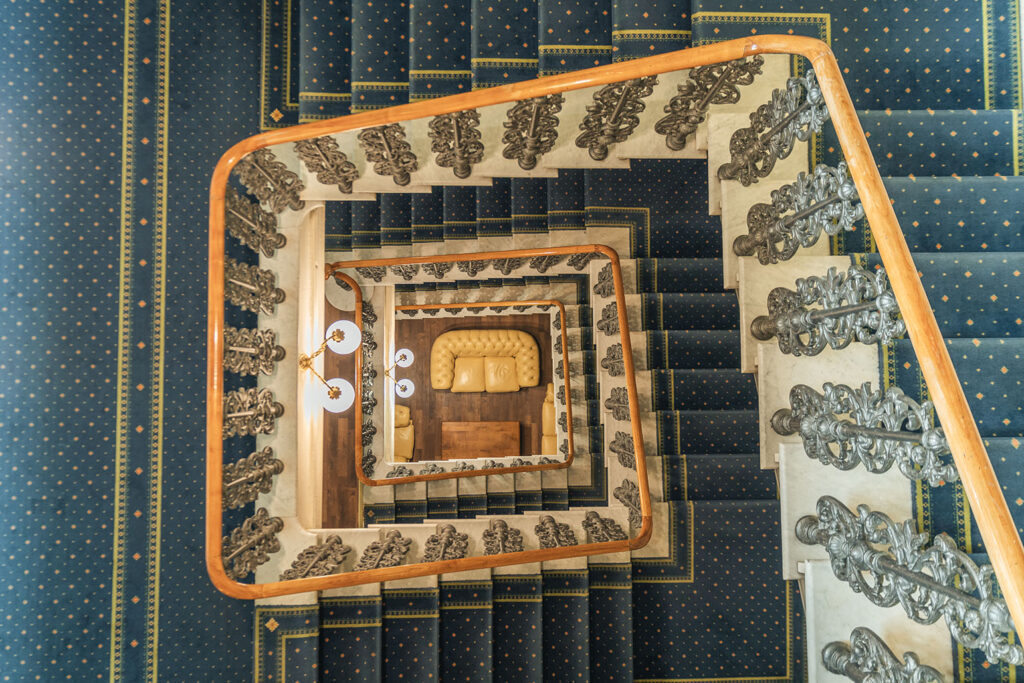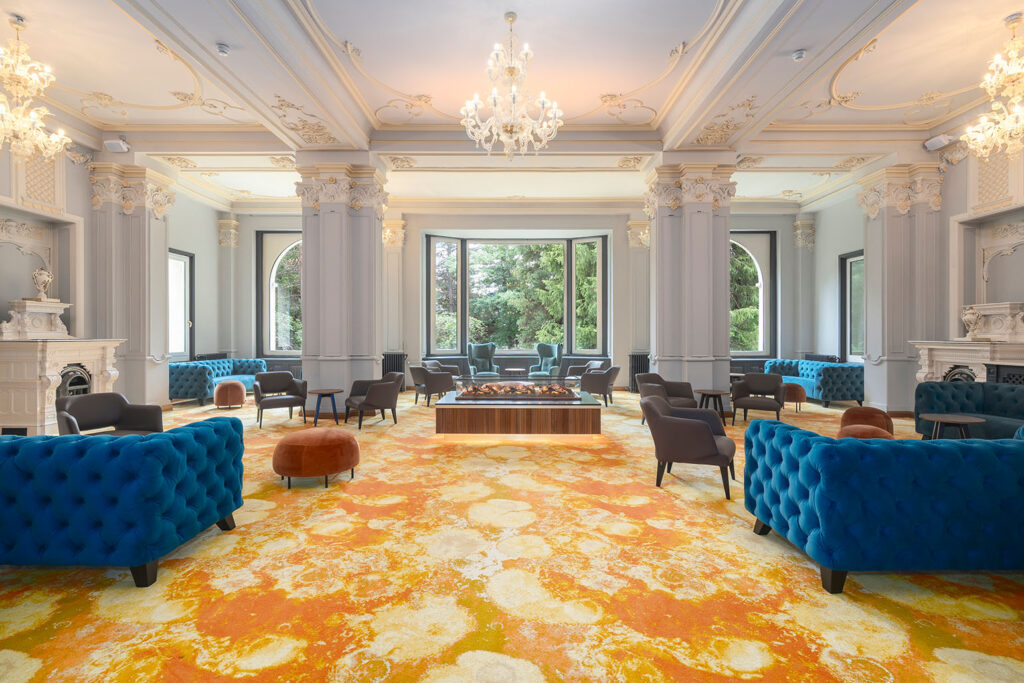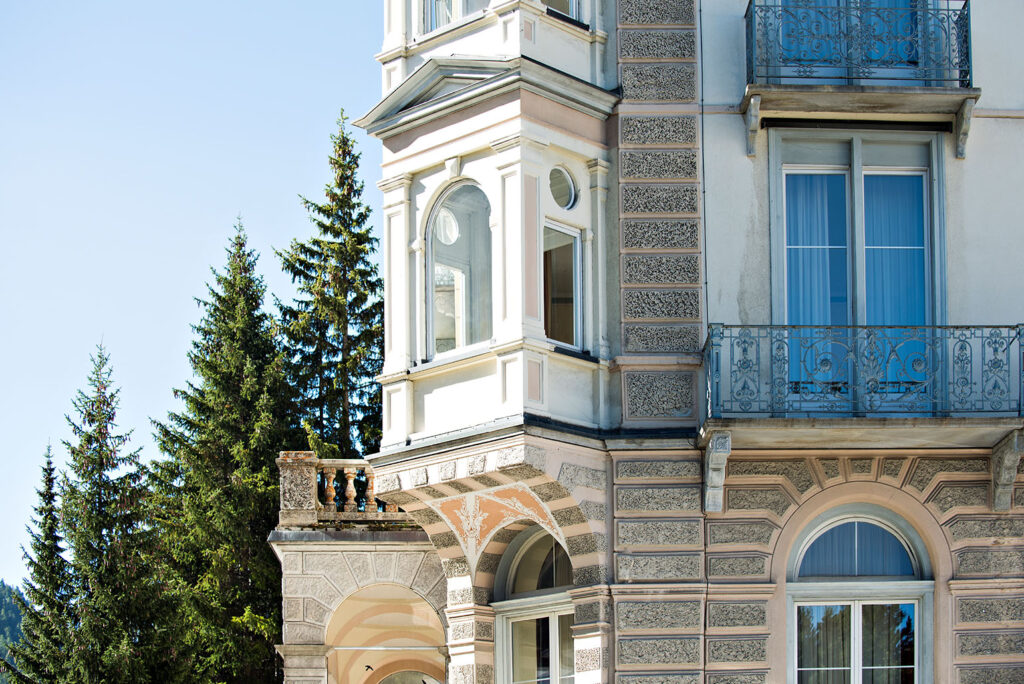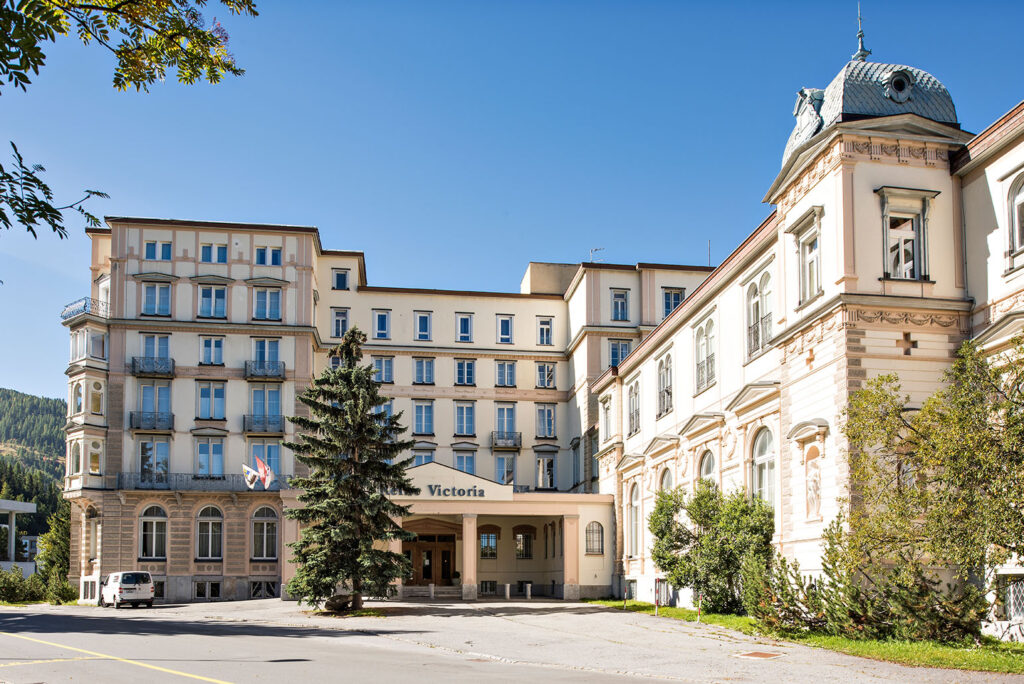150 YEARS
HOTEL REINE VICTORIA
CELEBRATING A
TIMELESS ELEGANCE
Celebrate our big anniversary with us!
From the curehotel of the European aristocracy until modern 4-star jewel has that hotel Reine Victoria his distinctive Charm preserves and tells stories ofn Hospitality, Art, Culture – and the timeless elegance, always new to invent.
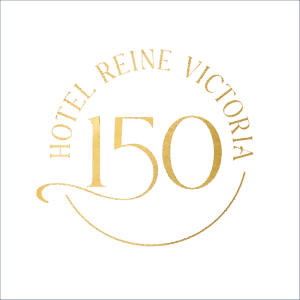
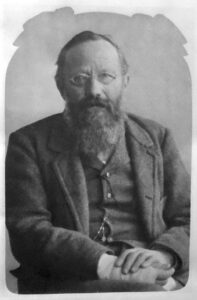
The man who designed St. Moritz
Anyone strolling through St. Moritz today cannot miss the unmistakable signature of Nicolaus Hartmann senior.
After a childhood of deprivation—orphanage, poverty, hard work—the exceptional architect from Chur rose to become St. Moritz's most iconic hotel palaces and churches. Hartmann didn't create houses; he set the stage for the new lifestyle of a thriving tourist destination. We are proud that the Hotel Reine Victoria is one of his works, connecting our hotel with the spirit of the Wilhelminian era.
Source: Kristina Hartmann, Master Builder in Graubünden. Three Generations of Nicolaus Hartmann 1850–1950
The home for unforgettable encounters
Named after the British Queen, counted the Reine Victoria readys in the 1890s to the leading hotels in St. Moritz. In the majestic The society met in the halls to celebrate, dance and make music – among them Duchess Vera of Württemberg, granddaughter of Tsar Nicholas I. A.uch maestro Herbert von Karajan set to music here in the theater hall a concert.
The Art of Hospitality
Around 1900, the Hotel Reine Victoria enchanted its guests with amenities that were unusual for the time: bathrooms, elevators, heating – and electric light!
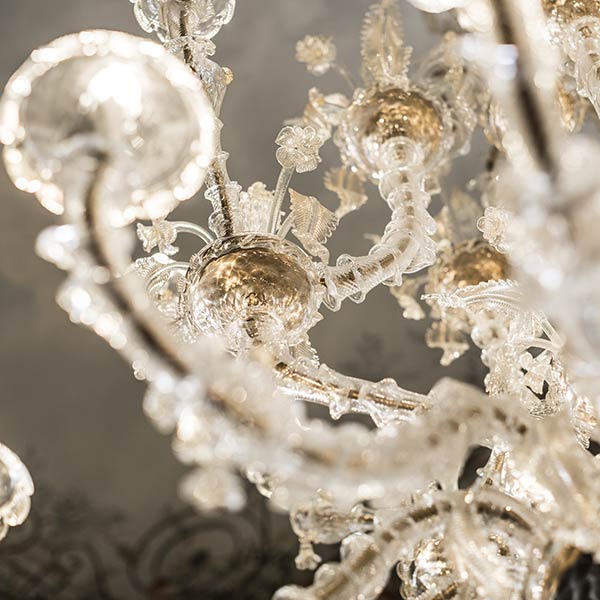
Let there be light
Before electricity arrived, the atrium allowed daylight from the roof to flood the impressive ground floor rooms. When electric lighting was installed for the first time in Switzerland in 1879—first at the Hotel Kulm in St. Moritz, and shortly thereafter at the Hotel Reine Victoria—a new era of architecture began, opened up by the possibilities of artificial lighting. A ceiling was installed in the lobby, painted by Antonio De Grada in bright, celestial ornamentation.
The splendor of these electrifying early days lives on to this day: 47 chandeliers made of fine Murano glass illuminate the path from the reception to the breakfast room.
The staircase in the atrium has also been largely preserved in its original condition and combines cast iron, wood and marble.
Putti, flowers, bows
Somewhere between Art Nouveau, Symbolism and Historicism, Antonio De Grada's fine brushstrokes adorn our ceilings.
Born in Milan in 1858, the artist quickly became a sought-after decorator for the Swiss upper class. His works hung in the Kunsthaus Zurich, traveled throughout the country with the Rotus exhibition, and reached London, where he was awarded the Gold Medal at the Crystal Palace in 1907.
Inspired by Italian religious buildings, De Grada created our lobby and theater hall as nostalgic gems of the Belle Époque.
Other hotels with ceiling paintings by De Grada:
- Maloja Palace
- Hotel Scaletta in S-chanf (temporarily closed)
- Grand Hotel Bagni di Bormio
De Grada is also suspected of being involved in the post office in Sarnen and the Fraumünster post office in Zurich.
Text by Marc Philip Seidel: Antonio De Grada – Life and Work. DissertationationsUniversity of Bern. Vissivo, Zurich 2015.
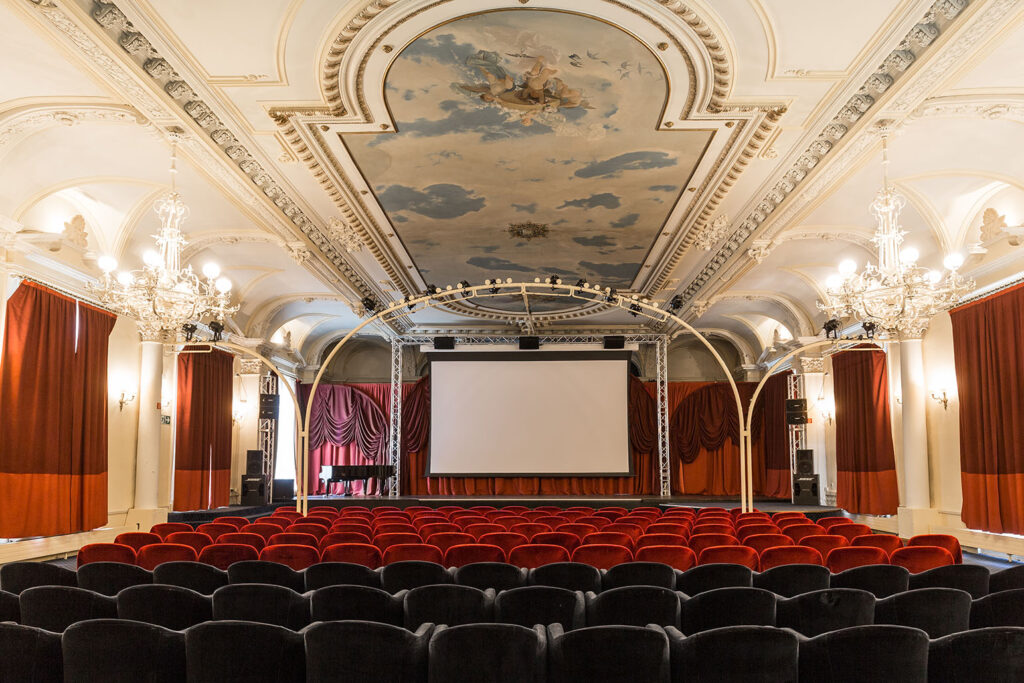
From luxury to matter-of-factness
In the early years of the Hotel Reine Victoria, toilets and bathrooms were shared on each floor. Water prices were likely on par with other hotels in St. Moritz: A full bath cost CHF 1 back then – adjusted for inflation, that's equivalent to about CHF 25 to 35 today!
The rooms were small and primarily intended for overnight stays. The communal spaces were all the more important: the lobby served as a stylish "conversation hall," complemented by salons such as the reading room. or the Bridge Room.
A new beginning with Laudinella
In 2015, the Laudinella Group took over the Hotel Reine Victoria – initially as a leasehold property before it was finally added to the portfolio in 2022 thanks to an investor.
All guest rooms were modernized prior to the purchase. The 2023 redesign added color to the public spaces and further highlighted the historic ornamentation—with a new restaurant, the stylish VIC'S BAR, and an inviting lobby.
Today, the hotel is far more than just a place to stay. It enriches the Engadin with art, culture, hospitality, and an inspiring community.
lobby

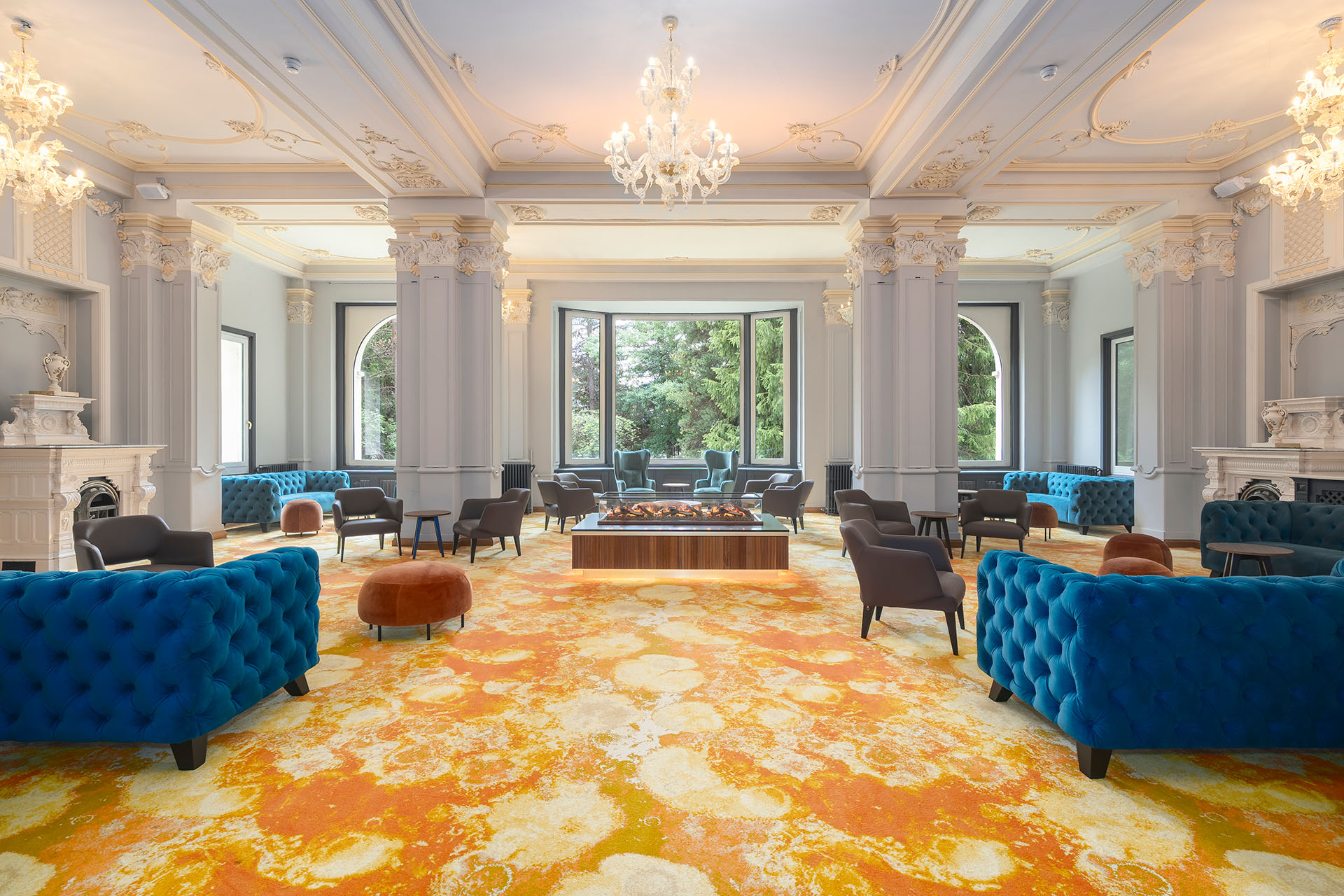
restaurant
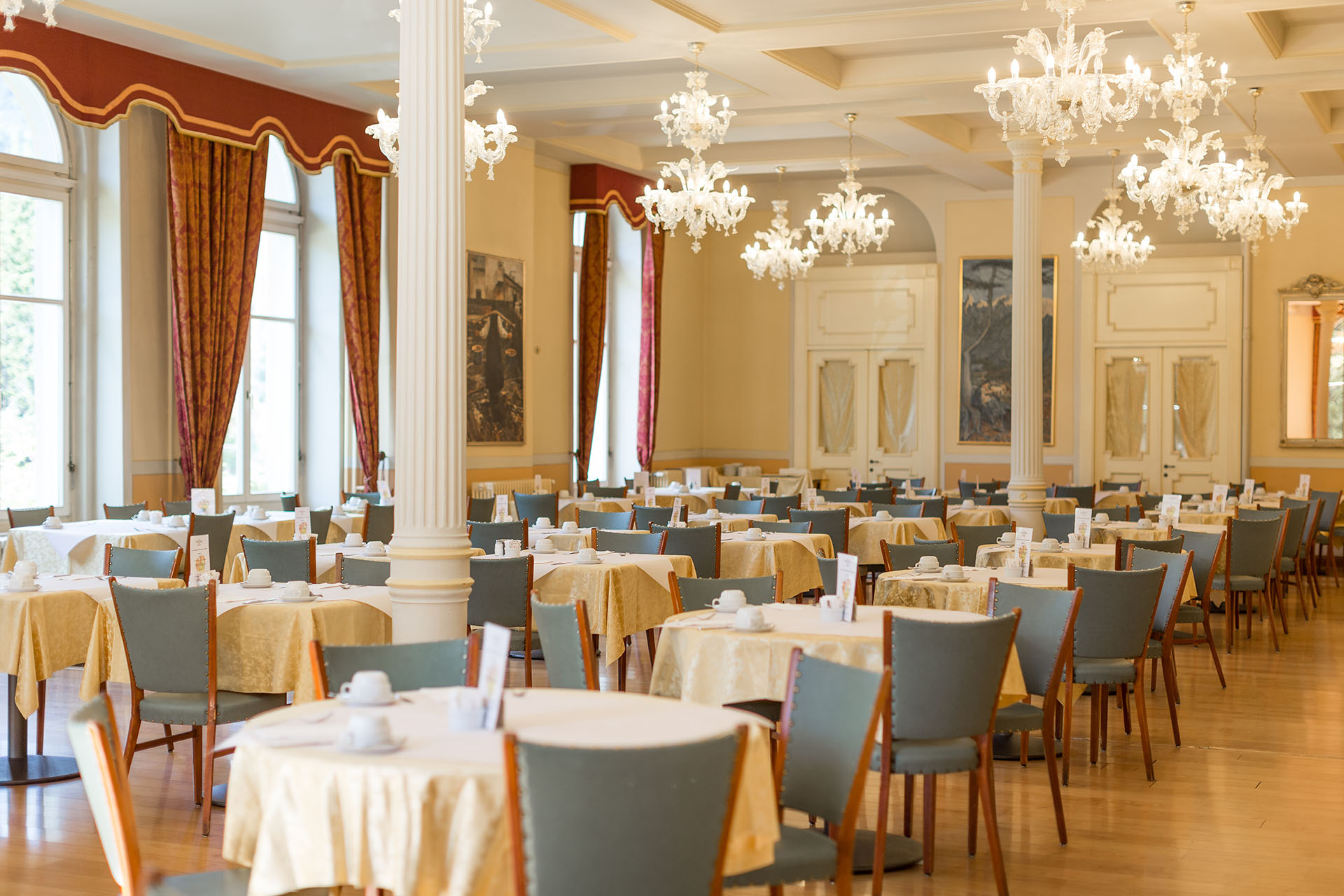
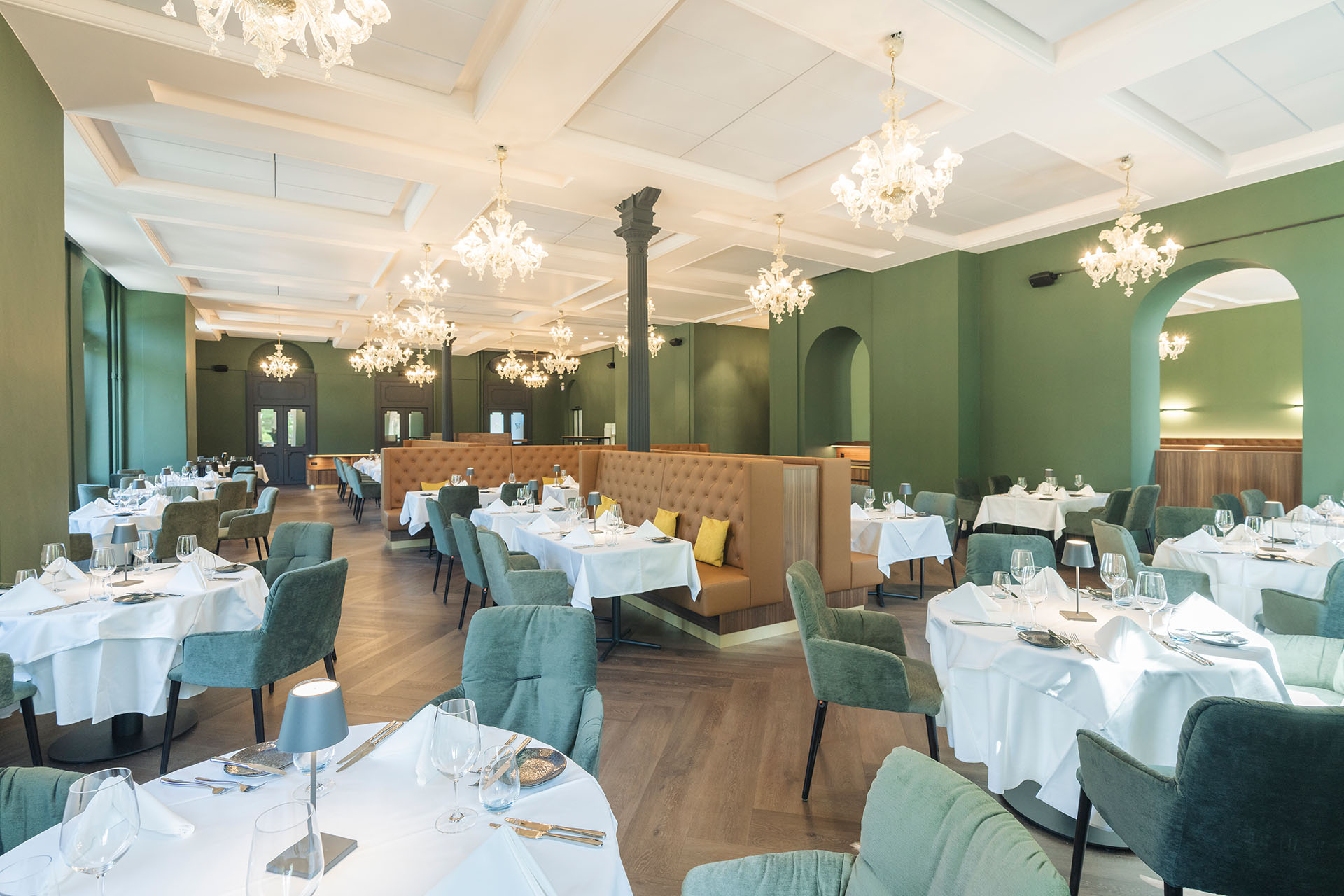
Hotel Reine Victoria today
"We have succeeded in restoring the hotel to its former glory. We are grateful for this and have so much more planned to ensure that history will continue to be written here in the future."
Myriam Schlatter, COO Laudinella Hotel Group
With large Passion we fill this historic place with life, so that not only history is created, but also personal experiences become unforgettable moments - characterized by hospitality, style and elegance. We would be happy if you Tpart of our journey.

Timeline
1872
Founding of the Curvereins Upper Engadine
1874-75
Construction of Hotel Victoria
ArArchitect: Nikolaus Hartmann senior
1875
Opening of Hotel Victoria
1878
Installation of electric lighting in the Hotel Kulm as the first hotel in Switzerland
1881
Dining room extension
1888
East wing extension
1889
Opening of the first telephone exchange in Graubünden
1891
Installation of electric lighting as one of the first Swiss hotels
1895/96
Conversion
Architects: Chiodera & Tschudy
1896
Commissioning of Switzerland's first electric tram St. Moritz Dorf–St. Moritz Bad
1896/97
Picturesque decoration by Antonio De Grada
1904
Commissioning of the Albula line Chur–St. Moritz
1905
Construction of the Grand Hotel St. Moritz, then largest Buildings of Switzerland
1909
Commissioning Bernina Line
1913
Inauguration of the cable car St. Moritz–Chantarella
1914
Outbreak of World War I, collapse of tourism
1918
End of World War I
1920
Start of passenger air traffic St. Moritz–London
1925
Car registration in the Engadin
1927
Relocation of the hotel entrance to the north side
1928
Presence as a media hotel:
Winter Olympics in St. Moritz
1928
Expansion of the Chantarella-Train to Corviglia
1929
Founding of the first ski school in Switzerland by Giovanni Testa
1929
Beginning of the global economic crisis, collapse of tourism
1932
Adjustment of the electrical Tram
1934
Ski World Championships St. Moritz
1939
Outbreak of World War II
1944
Destruction of the Grand Hotel St. Moritz by fire
1945
End of World War II
1955
Commissioning of the cable car Corviglia–Piz Nair
1956
Construction of the Laudinella course and cultural center
around 1960
Renamed to Hotel Pure Victoria
1963
Attic conversion
Architect: Schoch & Möller
1967
Northeast wing extension
Architect: Schoch & Möller
1969
First Engadin Ski Marathon
1972
Commissioning of the Signal cable car
1974
Ski World Championships in St. Moritz
1974
Hotel du Lac destroyed by fire
1997
Change of ownership of club Med to Tivigest
2003
Ski World Championships in St. Moritz
2003
Renovation of the historical part
2009
Renovation of the modern part
2015
Lease takeover through Hotel Laudinella
2017
Presence as a media hotel:
Ski World Championships in St. Moritz
2022
Acquisition by the Laudinella AG
2025
Presence as a media hotel:
Freestyle World Championships in St. Moritz
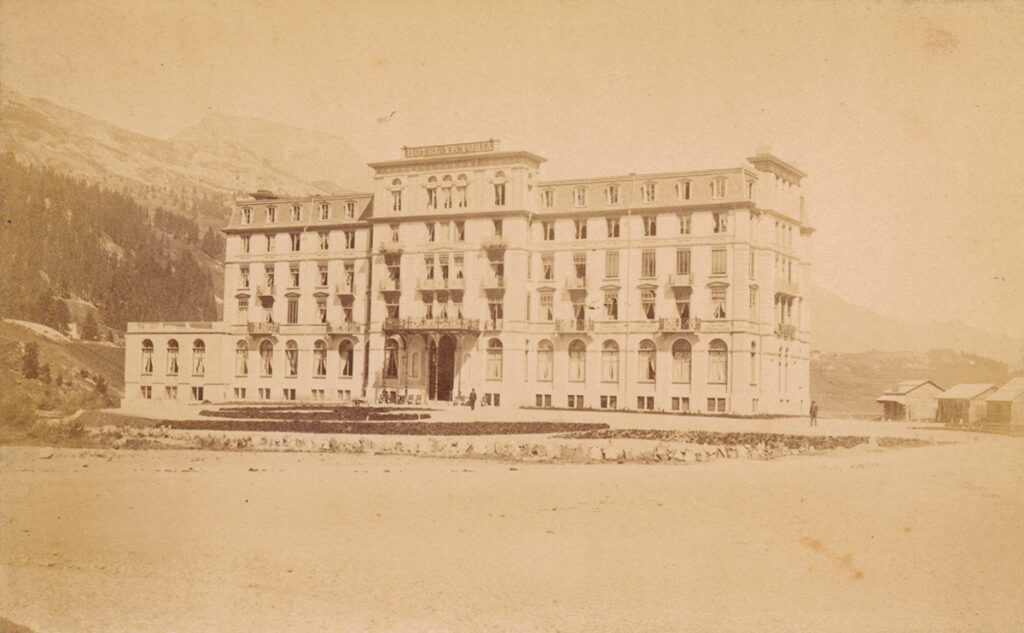
Approx. 1875
Origin: Documentation Library St. Moritz, Author: Adolphe Braun, Copyright: expired
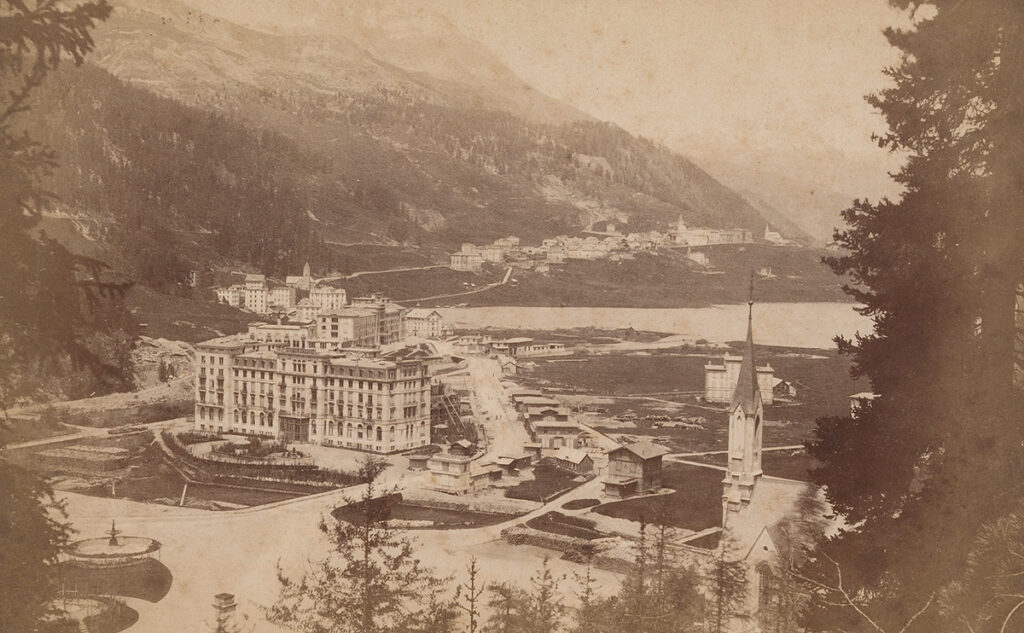
Approx. 1880
Origin: Documentation Library St. Moritz, Author: Alexander Flury, Copyright: expired
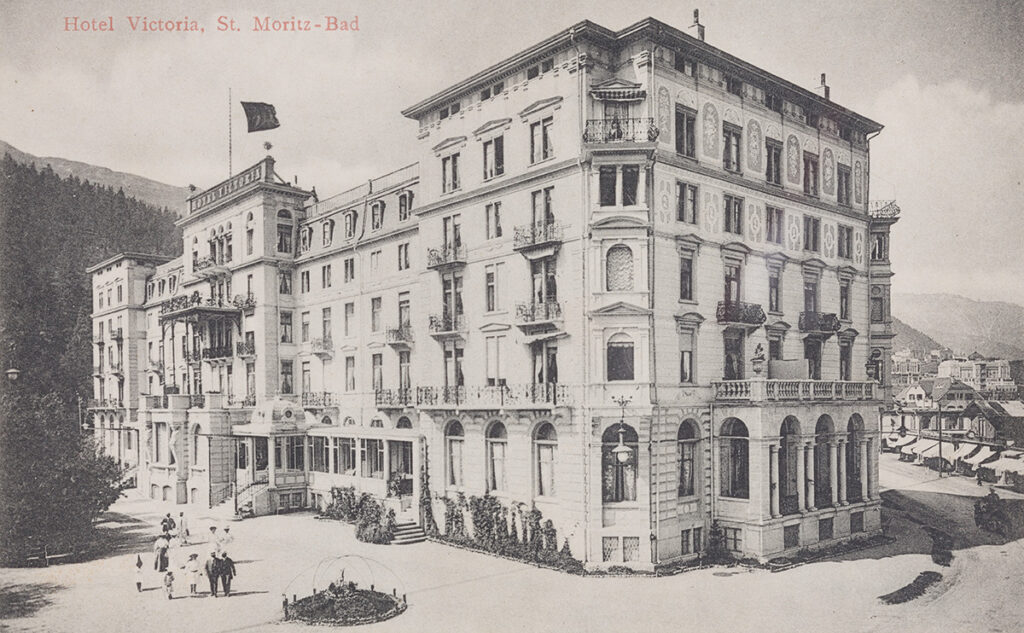
Approx. 1920
Source: Documentation Library St. Moritz, Author: Engadin Press, Copyright: Graubünden Photo Foundation
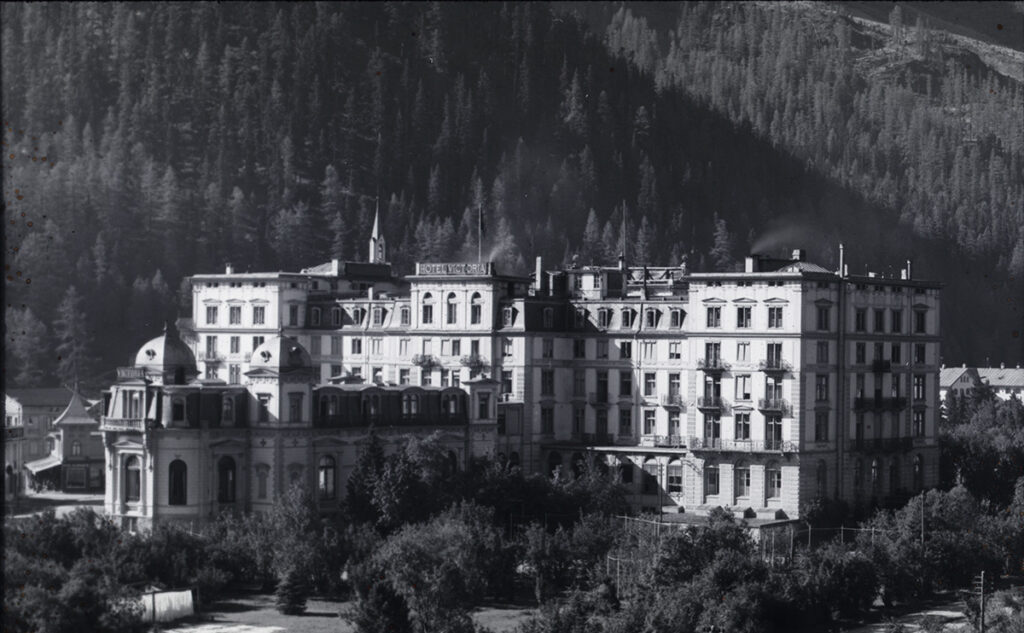
Approx. 1930
Source: Documentation Library St. Moritz, Author: Engadin Press AG, Copyright: Fotostiftung Graubünden

